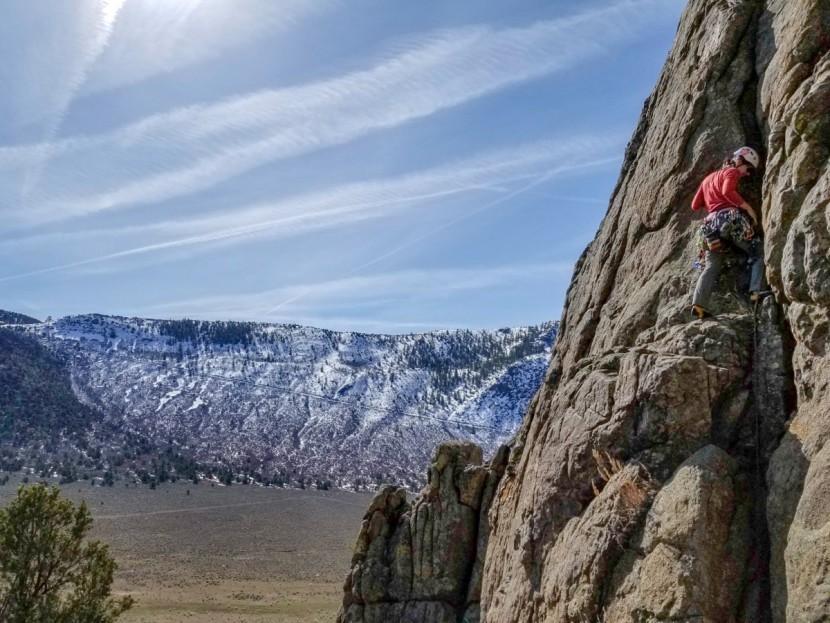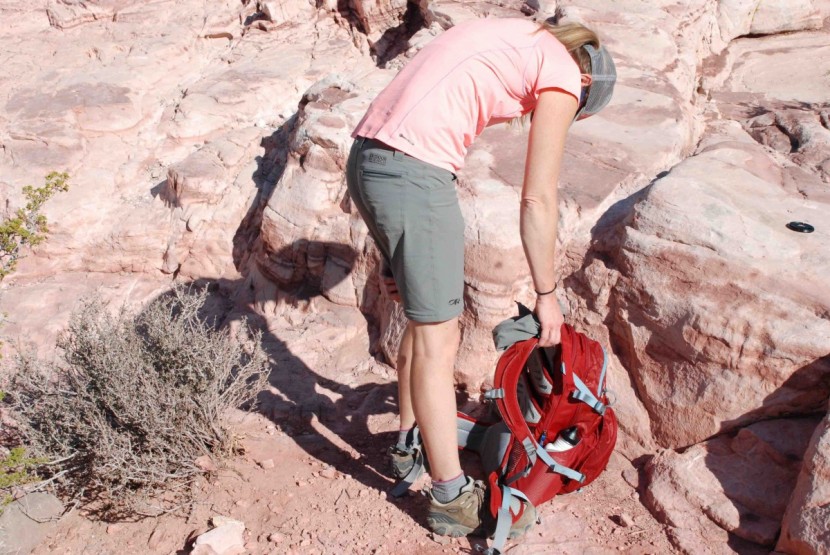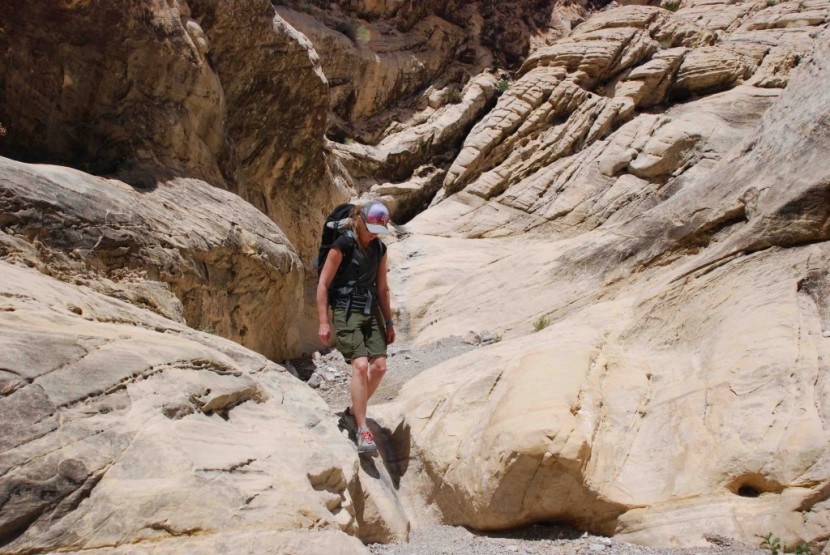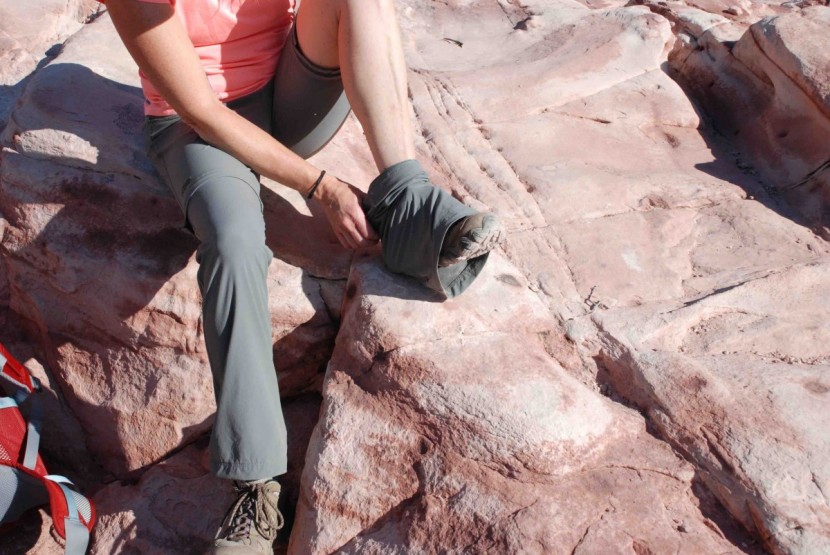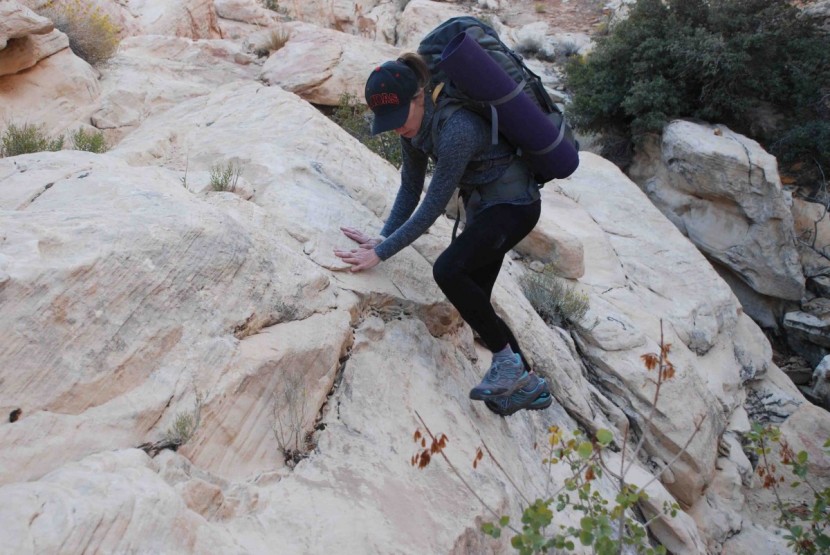We buy every pair of hiking pants that we review and wear them for several months while hiking, climbing, and camping. We tested the pants in this article in a range of environments, from the desert southwest to the northern woods of Maine and through the Sierra and Blue Ridge Mountains. We wore them in a range of temperatures and weather conditions and passed them around to friends to see how they fit. Here's how we test the pants in each metric.
Comfort and Mobility
We hike miles in every pair, with and without a heavy pack, scrambling through tight canyons and climbing mountains and cliffs along the way. Throughout these real-world tests, we note how comfortable each pair feels and whether there are any annoying features or seams. We also note the stretch of the material and whether the fit and cut allow for natural movements.
We also wear each pair of pants to the climbing gym, the yoga mat, and for a full day at the office to see if they can keep up with you and your busy life.
Venting and Breathability
Wearing many of these pants in Southern Utah gave us a great idea of how breathable they are and how well features like rollable hems or zip-off legs vented our perspiration.
When we can't make it to the desert, we test each pair of pants in a controlled environment at the local gym, hitting the mountain climber for 10 minutes and comparing how much sweat builds up on our legs.
We also compare the heaviness of the material by blowing air through it and assess how easy it is to roll up the hems or, in the case of convertible pants, zip off the legs.
Weather Resistance
We start by researching the water-repelling features of each of the pants to see if they are made of water-resistant fabric or coated in a durable water-repellant (DWR) finish. Then, we spray each model with a water bottle and note how long it takes for the water to soak through the material. We also stand in the shower until the pants soak through to get a sense of how they would handle a rainstorm.
Then we dunk each pair and hang them out to dry, timing how long it takes.
While out and about, we note how well the pants block wind, then switch them out in quick succession on the same windy day to compare them side-by-side. We also check to see which includes an official UPF sun protection rating.
Construction Quality
We always pay attention to how well the gear we test holds up to wear and tear. To get a better sense of how long it's likely to last, we also examine how well each item is constructed.
After testing the pants in the field for several months, we scrutinize each pair for any signs of wear or weakness. We pay attention to construction details and material thickness and strength. We pull and press on the fabric and seams with the blunt tip of a paperclip and scrape the fabric on briars and rough rock surfaces. We also examine zippers, buttons, clasps, and belts to gauge how sturdy they seem.
Versatility and Features
We assess how versatile each pair is based on their ability to handle hikes ranging from a casual stroll to a 3-month thru-hike. We also wear them around town and to work to see how well each pair blends into daily life.
To compare the quality and utility of their features, we first list them all as we unpack the pants. As we use the pants in the field, we note how useful the various features are in real life and grade them accordingly.

